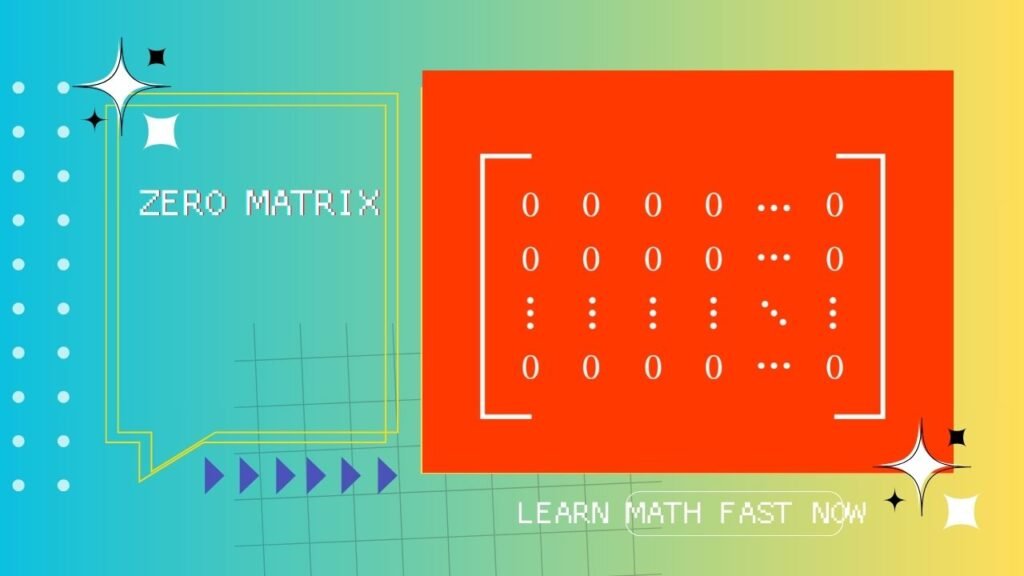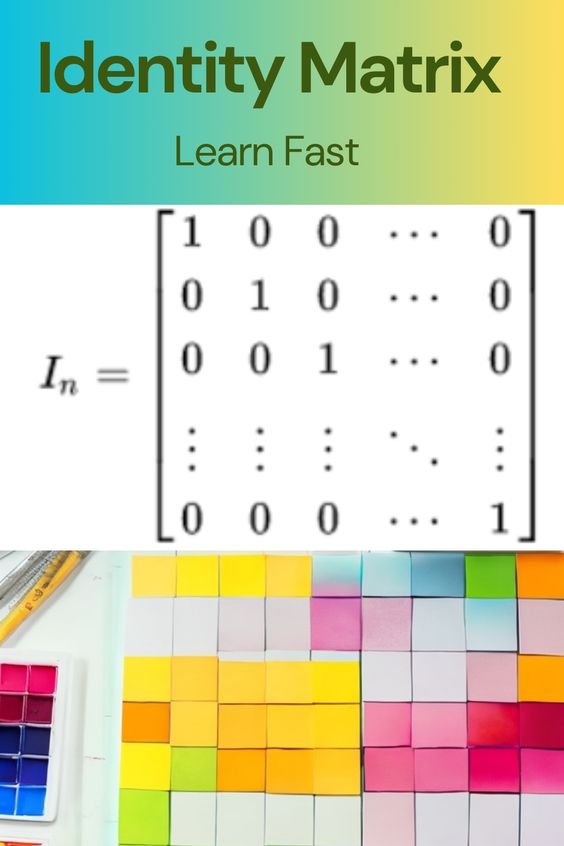Triangular Matrix – Definition, Examples ,Art Project & Worksheets

We talk here about Triangular Matrix.
What is a Triangular Matrix?
A triangular matrix is a square matrix in which all the elements below (or above) the main diagonal are zero. There are two types of triangular matrices: upper triangular matrices and lower triangular matrices.
Upper triangular matrices have all the elements below the main diagonal equal to zero.
Examples of upper triangular matrix:
1.Triangular Matrix 3x3 | 3 4 5 | | 0 2 7 | | 0 0 9 |
2. Triangular Matrix 3×3
| 10 8 6|
| 0 5 3 |
| 0 0 2 |
3. Triangular Matrix 4×4
| -2 7 9 12 |
| 0 1 8 6 |
| 0 0 -4 -2|
| 0 0 0 0 |
4. Triangular Matrix 4×4
| 1 6 0 10 |
| 0 -3 8 5 |
| 0 0 7 9 |
| 0 0 0 -2 |
5. Triangular Matrix 4×4
| 20 15 10 5 |
| 0 7 8 9 |
| 0 0 4 6 |
| 0 0 0 1 |
Lower triangular matrices have all the elements above the main diagonal equal to zero.
Examples of lower triangular matrix:
1. | 5 0 0 | | 3 2 0 | | 9 6 1 | 2. | 8 0 0 0 | | 2 4 0 0 | | 6 9 7 0 | | 1 3 5 2 | 3. | 1 0 0 0 0 | | 6 4 0 0 0 | | 3 9 8 0 0 | | 5 7 2 6 0 | | 2 4 1 8 7 | 4. | 3/2 0 0 | | 1/4 2/3 0 | | 7/8 9/5 1/2| 5. | -4 0 0 0 | | -1 -3 0 0 | | -8 -7 -6 0 | | -9 -5 -2 -10 |
Determinant of a triangular matrix
The determinant of a triangular matrix is very easy to calculate. For an upper triangular matrix, the determinant is simply the product of the diagonal elements. For a lower triangular matrix, the determinant is also the product of the diagonal elements.
Here is an example of how to calculate the determinant of an upper triangular matrix:
[1 2 3 4]
[0 5 6 7]
[0 0 8 9]
[0 0 0 10]
The determinant of this matrix is:
1 * 5 * 8 * 10 = 4000
Here is an example of how to calculate the determinant of a lower triangular matrix:
[10 0 0 0]
[8 9 0 0]
[6 7 8 0]
[4 5 6 7]
The determinant of this matrix is:
10 * 9 * 8 * 7 = 5040
Inverse of a triangular matrix
The inverse of a triangular matrix can also be calculated very easily. For an upper triangular matrix, the inverse is simply the matrix with the reciprocals of the diagonal elements. For a lower triangular matrix, the inverse is also the matrix with the reciprocals of the diagonal elements.
Calculate the inverse of an upper triangular matrix:
[1 2 3 4] [0 5 6 7] [0 0 8 9] [0 0 0 10]
The inverse of this matrix is:
[1/10 -2/10 3/10 -4/10] [0 1/5 -1/5 2/5] [0 0 1/8 -1/8] [0 0 0 1/10]
Calculate the inverse of a lower triangular matrix:
[10 0 0 0] [8 9 0 0] [6 7 8 0] [4 5 6 7]
The inverse of this matrix is:
[1/10 0 0 0] [-2/8 1/8 0 0] [3/64 -1/64 1/64 0] [-4/50 2/50 -1/50 1/50]
How Triangular Matrices Can Help AI Learn
Triangular matrices are a type of square matrix in which all the elements below the main diagonal are zero. This makes them very efficient to store and manipulate, which makes them ideal for use in artificial intelligence (AI).
In AI, triangular matrices are often used to represent relationships between objects. For example, a triangular matrix could be used to represent the relationships between different parts of a car, such as the engine, the wheels, and the body. This would allow AI to quickly and easily determine which parts of the car are connected to each other, which is important for tasks such as planning a repair or designing a new car.
Triangular matrices can also be used to represent probabilities. For example, a triangular matrix could be used to represent the probability that a particular person will take a certain action, such as buying a product or clicking on an ad. This could be used by AI to make predictions about human behavior, which is important for tasks such as targeted advertising and customer segmentation.
In addition to being efficient and easy to store, triangular matrices are also very flexible. They can be used to represent a wide variety of relationships and probabilities, which makes them a powerful tool for AI.
Here is a simple example of how a triangular matrix could be used to represent the relationships between different parts of a car:
Engine Wheels Body
------- ------- --------
Engine 1 0 0
Wheels 0 1 0
Body 0 0 1
This matrix shows that the engine is connected to the wheels and the body, but the wheels and the body are not connected to each other. This information could be used by AI to quickly and easily determine which parts of the car are connected to each other, which is important for tasks such as planning a repair or designing a new car.
Here is another example of how a triangular matrix could be used to represent probabilities:
Person Action
------- --------
John Buy 0.5
Mary Click 0.7
Bill Not Buy 0.2
This matrix shows that the probability that John will buy a product is 0.5, the probability that Mary will click on an ad is 0.7, and the probability that Bill will not buy a product is 0.2. This information could be used by AI to make predictions about human behavior, which is important for tasks such as targeted advertising and customer segmentation.
Triangular matrices are a powerful tool that can be used to represent relationships and probabilities in AI. They are efficient, easy to store, and flexible, which makes them ideal for a wide variety of tasks.
Exploring Upper Triangular Matrices through Art
We’ll use the patterns and structures of upper triangular matrices as inspiration to create a visually appealing art piece.
Materials Needed:
- Canvas or drawing paper
- Acrylic paints or watercolors
- Brushes
- Ruler
- Pencil
Instructions:
- Designing the Base:
- Start by selecting a canvas or a sheet of drawing paper.
- Use a ruler and a pencil to lightly draw a triangular grid on the canvas. The grid will consist of rows and columns that form an upper triangular shape. Leave some space around the edges for design elements.
- Choosing a Color Palette:
- Select a color palette for your art piece. Consider using a combination of colors that evoke a sense of harmony and balance.
- Coloring the Triangles:
- Begin coloring each triangle within the grid using your chosen colors. You can alternate colors row by row or create your own pattern.
- Adding Depth and Texture:
- Use various shades and tones of the chosen colors to add depth and texture to the triangles. This can be achieved by blending colors or adding light and shadow effects.
- Highlighting Patterns:
- Within the upper triangular grid, you can highlight specific patterns or shapes that emerge naturally from the color combinations. For example, you might notice diagonal patterns or nested shapes.
- Finishing Touches:
- Once you’re satisfied with the design, let the artwork dry completely.
- Optionally, you can add additional artistic elements such as lines, swirls, or abstract shapes to enhance the visual appeal.
The final art piece will showcase the mesmerizing beauty of upper triangular matrices translated into a visually captivating design. The interplay of colors, patterns and textures will create an artwork that not only engages the viewer but also celebrates the elegance of mathematical structures.
This project provides a creative way to appreciate and explore upper triangular matrices while producing a unique and beautiful piece of art. It’s an opportunity to connect mathematics and creativity in a way that is both enjoyable and educational.
Worksheets
Identifying Triangular Matrices
Matrix A:
| 2 0 0 |
| 3 1 0 |
| 1 7 5 |
Matrix B:
| 0 4 6 |
| 0 2 9 |
| 0 0 8 |
Matrix C:
| 1 2 3 |
| 0 4 5 |
| 0 0 6 |
Questions:
- Identify the type of triangular matrix (upper/lower) for Matrix A.
- Identify the type of triangular matrix (upper/lower) for Matrix B.
- Identify the type of triangular matrix (upper/lower) for Matrix C.
- Determine if any of the given matrices are diagonal matrices.
Answers:
- Lower triangular
- Upper triangular
- Upper triangular
- None of the given matrices are diagonal matrices.
Operations with Triangular Matrices
Matrix P (Upper Triangular):
| 4 5 8 |
| 0 9 2 |
| 0 0 6 |
Matrix Q (Lower Triangular):
| 3 0 0 |
| 1 7 0 |
| 2 9 5 |
Questions:
- Calculate the product of Matrix P and Matrix Q.
- Calculate the sum of Matrix P and Matrix Q.
- Calculate the difference between Matrix Q and Matrix P.
- Determine if the product of an upper triangular matrix and a lower triangular matrix is always upper or lower triangular.
Answers:
Product of P and Q:
| 12 45 40 |
| 9 63 10 |
| 12 63 30 |
Sum of P and Q:
| 7 5 8 |
| 1 16 2 |
| 2 9 11 |
Difference between Q and P:
| -1 -5 -8 |
| 1 -2 0 |
| 2 9 -1 |
The product of an upper triangular matrix and a lower triangular matrix is always an upper triangular matrix.
From Triangular Matrix to Learn Matrix Fast
From Triangular Matrix to HOME






Responses